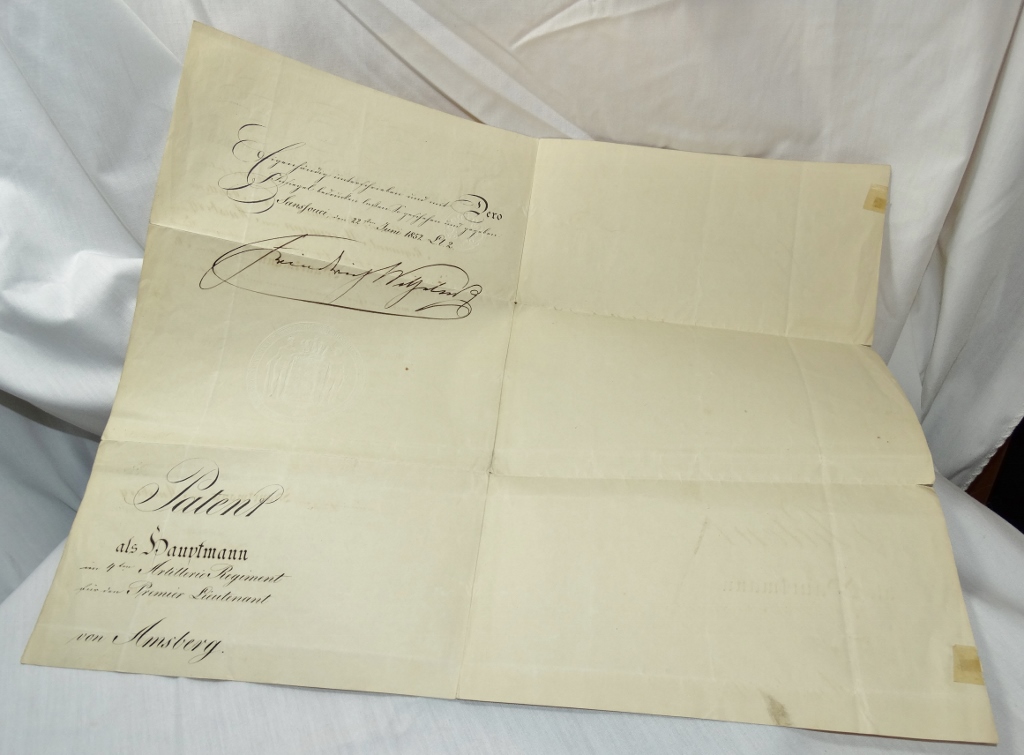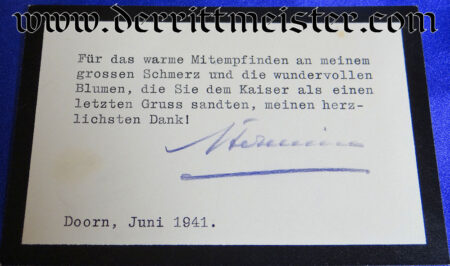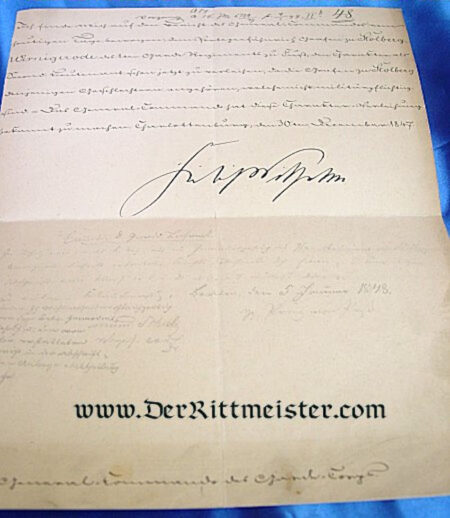Description
PRUSSIA – PATENT – HAUPTMAN PROMOTION – SIGNED BY PRUSSIA’S KÖNIG FRIEDRICH WILHELM IV
In Prussia, promotion patents were presented to the officer on the occasion of his elevation. This document was presented to an Artillerie Hauptmann by König Friedrich Wilhelm IV. The promotion patent was a very elaborate document. The example measures 14 ½” x 8 7/8″ before it is unfolded. As the information often covered several pages, when fully open the document measures 14 ½” x 16.” This provided four pages, measuring 14 ½” x 8 7/8,” on which to write the pertinent information. In our document’s time period, royal court scribes produced these beautiful papers along with urkunden (award documents for orders and decorations). Our document commemorates the promotion of Hermann von Amsberg. He served in Feldartillerie-Regiment Prinzregent Luitpold von Bayern Nr 4. He was promoted from Premier Lieutenant (later, the rank became known as oberleutnant) to Hauptmann on 22 June 1852. The document was signed at Sanssouci, the Potsdam castle modeled on the French castle at Versailles. (The latter was built by Frederick the Great, a great admirer of French culture). The document is boldly signed by König Friedrich Wilhelm IV (1796-1861). Directly below his large signature we see the House of Hohenzollern’s embossed royal seal.
[Friedrich Wilhelm IV was the son of Friedrich Wilhelm III (1770–1840), Prussia’s King throughout the Napoleonic Wars. He also instituted the Iron Cross during his reign. Friedrich Wilhelm IV was Wilhelm I’s older brother. Friedrich Wilhelm suffered a stroke in 1857 that left him physically and mentally unable to continue his duties. Wilhelm I assumed the duties of a Regent and replaced his ailing brother. This continued until 1861 when Friedrich Wilhelm IV died, at which point Wilhelm I became King of Prussia. From that time onward, under the guidance of Wilhelm I, Otto von Bismarck (the Iron Chancellor), and Helmuth von Moltke, Germany’s path to unification under Prussian control and its emergence as a true European power was inevitable].
This amazing document is quite a piece of history. It is in remarkable condition for being more than ONE-HUNDRED-SIXTY years-old!





